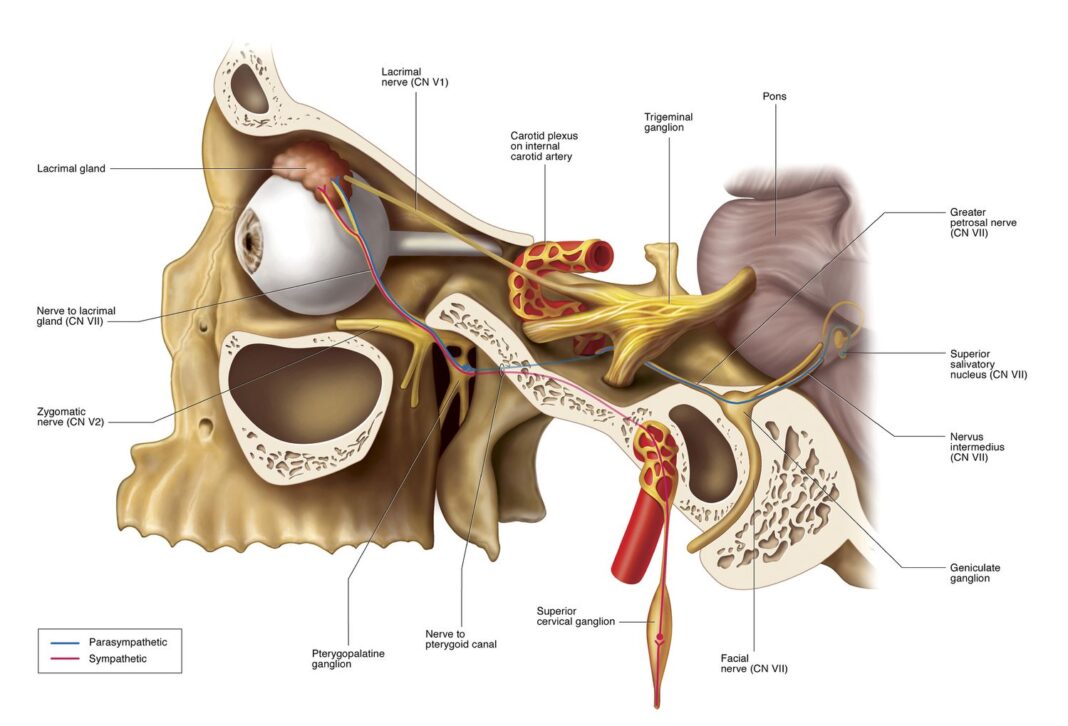Anatomy
The greater petrosal nerve is a branch of the facial nerve that innervates the lacrimal gland, which produces tears. It is also referred to as the greater superficial petrosal nerve and is related to structures such as the pterygopalatine ganglion, geniculate ganglion, and the opening of the lacrimations.
Functions
The primary functions of the greater petrosal nerve are taste and secretomotor (dealing with secretions from glands). It is responsible for providing nerve function to the lacrimal gland, which produces tears.
Anatomy of the Greater Petrosal Nerve
The greater petrosal nerve branches off of the facial nerve in the skull. It then passes through the hiatus of the facial canal, then along the middle cranial fossa, and finally exits the skull through the foramen lacerum. From there, it runs alongside the petrosal branch of the middle meningeal artery and enters the pterygoid canal, where it joins the deep petrosal nerve.
Structure
The parasympathetic fibers of the greater petrosal nerve leave the ganglion through several important branches, including the greater palatine nerve, lesser palatine nerve, nasopalatine and posterior nasal branches, and the pharyngeal branch.
Anatomical Variation
With nerves, it is imperative for surgeons to know about possible variations so they can avoid accidental injuries during procedures. The greater petrosal nerve has some known variations.
Associated Conditions
The greater petrosal nerve is vulnerable to damage from disease, surgery, tumors, or trauma anywhere along its course, especially skull fractures. The function of its branches can be impaired by damage to the greater petrosal nerve itself, the facial nerve, or the trigeminal nerve.
Conclusion
The greater petrosal nerve is a vital part of the facial nerve that plays a crucial role in tear production and saliva flow. Any damage to this nerve can lead to a range of problems, including dry eyes, dry mouth, and cluster headaches.
Frequently Asked Questions
Q: What is the function of the greater petrosal nerve?
A: The primary functions of the greater petrosal nerve are taste and secretomotor (dealing with secretions from glands).
Q: What is the anatomy of the greater petrosal nerve?
A: The greater petrosal nerve branches off of the facial nerve in the skull and passes through the hiatus of the facial canal, then along the middle cranial fossa, and finally exits the skull through the foramen lacerum.
Q: What are the possible variations of the greater petrosal nerve?
A: There are some known variations of the greater petrosal nerve, including its distance from certain bony structures and the presence of additional branches.





